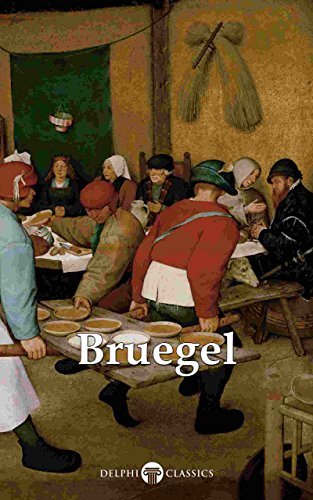
Part of Series
The Austrian symbolist painter Gustav Klimt was a founding member of the Vienna Secession, whose celebrated paintings and murals are widely regarded as modern masterpieces of twentieth century art. The Masters of Art Series presents the world’s first digital e-Art books, allowing digital readers to explore the works of the world’s greatest artists in comprehensive detail. This volume presents Klimt’s complete paintings in beautiful detail, with concise introductions and hundreds of high quality images. (Version 1) * The complete paintings of Gustav Klimt—over 250 images, fully indexed and arranged in chronological and alphabetical order * Includes reproductions of rare lost works * Features a special ‘Highlights’ section, with concise introductions to the masterpieces, giving valuable contextual information * Enlarged ‘Detail’ images, allowing you to explore Klimt’s celebrated works in detail, as featured in traditional art books * Hundreds of images in stunning colour – highly recommended for viewing on tablets and smart phones or as a valuable reference tool on more conventional eReaders * Special chronological and alphabetical contents tables for the complete paintings * Easily locate the paintings you want to view * Scholarly ordering of plates into chronological order and literary genres Please visit www.delphiclassics.com to browse through our range of exciting e-Art books CONTENTS: The Highlights THE THEATRE IN TAORMINA THE OLD BURGTHEATER IN VIENNA PORTRAIT OF PIANIST JOSEPH PEMBAUER LOVE MUSIC I PALLAS ATHENA NUDA VERITAS JUDITH AND THE HEAD OF HOLOFERNES GOLDFISH BEETHOVEN FRIEZE THE THREE AGES OF WOMAN PORTRAIT OF FRITZA RIEDLER WATER SNAKES I PORTRAIT OF ADELE BLOCH-BAUER I THE KISS DANAË TREE OF LIFE ADAM AND EVE The Paintings THE COMPLETE PAINTINGS ALPHABETICAL LIST OF PAINTINGS Please visit www.delphiclassics.com to browse through our range of exciting titles
Author

Gustav Klimt was born in Baumgarten, near Vienna, the second of seven children—three boys and four girls. All three sons displayed artistic talent early on. His father, Ernst Klimt, formerly from Bohemia, was a gold engraver. Ernst married Anna Klimt (née Finster), whose unrealized ambition was to be a musical performer. Klimt lived in poverty for most of his childhood, as work was scarce and economic advancement was difficult for immigrants. In 1876, Klimt was awarded a scholarship to the Vienna School of Arts and Crafts (Kunstgewerbeschule), where he studied until 1883, and received training as an architectural painter. He revered the foremost history painter of the time, Hans Makart. Klimt readily accepted the principles of a conservative training; his early work may be classified as academic. In 1877 his brother Ernst, who, like his father, would become an engraver, also enrolled in the school. The two brothers and their friend Franz Matsch began working together; by 1880 they had received numerous commissions as a team they called the "Company of Artists", and helped their teacher in painting murals in the Kunsthistorisches Museum in Vienna. Klimt began his professional career painting interior murals and ceilings in large public buildings on the Ringstraße including a successful series of "Allegories and Emblems". In 1888, Klimt received the Golden order of Merit from Emperor Franz Josef I of Austria for his contributions to murals painted in the Burgtheater in Vienna. He also became an honorary member of the University of Munich and the University of Vienna. In 1892 both Klimt's father and brother Ernst died, and he had to assume financial responsibility for his father's and brother's families. The tragedies affected his artistic vision as well, and soon he would veer toward a new personal style. In the early 1890s, Klimt met Emilie Flöge, who, notwithstanding the artist's relationships with other women, was to be his companion until the end of his life. Whether his relationship with Flöge was sexual or not is debated, but during that period Klimt fathered at least 14 children. —Wikipedia


